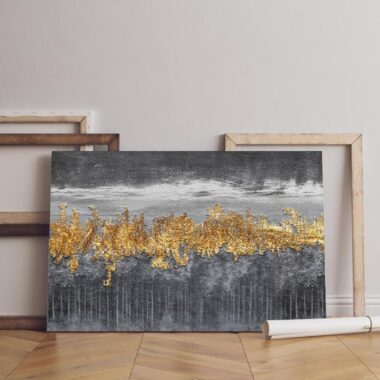Welcome to the colorful world of heat transfer printing, where creativity meets endless possibilities! At AmazingPrint, we believe that every product has the potential to become something truly special, and heat transfer printing is the perfect way to make that magic happen. Whether you’re a seasoned professional or a passionate DIY creator, this technique is your gateway to turning simple materials into unique, personalized treasures.
Think of this guide as your friendly companion on the journey from curious beginner to confident transfer expert. We’ll walk you through the different types of transfer paper, explore various printing methods.
How Heat Transfer Paper Works
At its core, heat transfer paper is a clever tool designed to bring your ideas to life. It’s coated with a special heat-sensitive layer that reacts when exposed to heat and pressure. This reaction allows your printed design to bond seamlessly with fabrics, tote bags, home décor items, and many other surfaces opening the door to endless customization options.
Step-by-Step: How to Use Heat Transfer Paper
Getting started with heat transfer printing is easier than you might think. Here’s a simple breakdown of the process:
- Print your chosen design onto the heat transfer paper.
- Trim around the design if needed to get a clean outline.
- Place the printed transfer paper carefully on your selected material.
- Apply the right amount of heat and pressure using a heat press or household iron.
- Gently peel away the paper or film to reveal your finished design.

While these steps form the basic foundation, each type of transfer paper comes with its own unique features. Understanding these differences is key to achieving perfect results whether you’re customizing a single T-shirt or launching your own branded collection.
With a little practice and the right guidance, you’ll be amazed at how quickly you can master heat transfer printing and create eye-catching products that truly stand out. At AmazingPrint, we’re here to inspire your creativity and provide you with the best tools to bring your ideas to life.
Different Types of Heat Transfer Paper and How They Work
Heat transfer papers are not one-size-fits-all. Each type is designed for specific printers, fabrics, and results. Picking the right paper ensures your designs come out vibrant, long-lasting, and professional-looking. Let’s explore the four main types you’ll come across.
1. Inkjet Transfer Paper
Inkjet transfer paper is a classic favorite among hobbyists and professionals alike. Specially designed for inkjet printers, it features a unique ink-absorbing coating that captures the design with incredible detail. When you apply heat and pressure, this coating along with the ink releases from the paper and bonds beautifully to your fabric.
There are two versions:
- For light fabrics, the transfer is transparent, allowing the fabric color to blend with the design.
- For dark fabrics, an extra opaque layer is added to keep the design’s colors bright and prevent the fabric shade from showing through.

2. Laser Transfer Paper
If you’re using a laser printer, laser transfer paper is your go-to option. Instead of liquid ink, laser printers use toner, a fine powder that fuses onto the paper’s surface through heat. The paper itself has a special coating that melts during the heat transfer process, bonding the toner securely to the fabric.
This type also comes in light and dark fabric versions. For dark materials, there’s an additional white backing layer that enhances color vibrancy, ensuring your designs look bold and crisp.
3. Sublimation Transfer Paper
Sublimation transfer paper takes heat transfer printing to a whole new level. Using heat-sensitive inks, this method turns the ink directly from solid to gas, bypassing the liquid stage. The gas then penetrates the polymer fibers of the material, becoming part of the fabric itself.
This results in vivid, permanent prints that don’t peel or crack. It’s best suited for polyester fabrics or specially coated items like mugs and phone cases, where the dye can form a strong bond.
4. DTF (Direct-to-Film) Transfer Paper
DTF printing has become a game-changer for its flexibility and vibrant results. In this method, designs are printed onto PET film, then coated with a fine adhesive powder. Once heat is applied, the adhesive activates, allowing the design to transfer directly onto the fabric without the need for cutting or weeding.
DTF works brilliantly on different fabric types and colors, making it a favorite for custom T-shirts, hoodies, and promotional products.
For a more detailed breakdown of each type, take a look at our Complete Guide to Heat Transfer Paper, and if you’re curious about printers, our Heat Transfer Printers Guide will walk you through everything you need to know.
Also Read: Personalized Holiday Gifts for Everyone
Using Heat and Pressure: Choosing the Right Tool
No matter which transfer paper you pick, the secret to flawless results lies in applying heat and pressure correctly. Here are the most common tools you can use:
Heat Press
For professional-quality results, a heat press is the gold standard. It delivers consistent temperature and pressure, ensuring your transfers look sharp and last wash after wash. Adjust your settings based on your transfer paper type, and you’ll achieve that smooth, factory-finish look every time.
Cricut EasyPress
Perfect for crafters and small businesses, the Cricut EasyPress combines the portability of a home iron with the performance of a heat press. Its even heating surface and compact design make it ideal for personalized projects. Just keep your pressure steady and movements consistent to get excellent results.
Home Iron
If you’re just starting out, don’t worry a regular home iron can do the job too. While it requires a bit more patience, especially around the edges, even heat and steady movement can produce surprisingly good transfers. Just remember: skip the steam function!
Also Read: How To Ensure Customer Satisfaction Guarantee
Mastering Each Transfer Type
Each type of transfer paper has its own quirks and techniques. Whether you’re working with Inkjet, Laser, Sublimation, or DTF transfers, understanding their unique processes will help you unlock their full potential. In the next steps of this heat transfer printing journey, we’ll guide you through the application methods, expert tricks, and insider tips to help you bring your designs to life with confidence.
At AmazingPrint, we’re passionate about turning creativity into reality. With the right tools and a bit of know-how, you’ll be ready to create personalized products that impress, inspire, and truly stand out.











